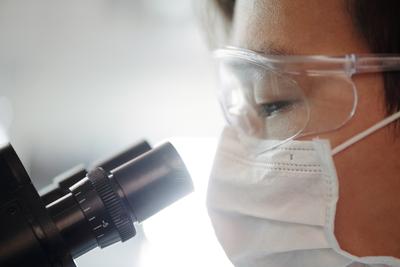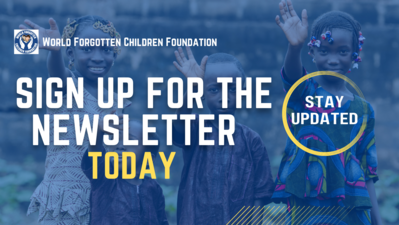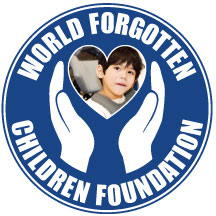
Hansen’s Disease, or leprosy, is a bacterial infection caused by Mycobacterium leprae. The slow-growing bacteria can affect the nerves, eyes, skin and lining of the nose. If diagnosed and treated early, Hansen’s disease can be cured. People with the disease can continue to live a fairly normal, active life during and after treatment. While leprosy caused fear among people in communities affected because it was thought of as a highly contagious and devastating disease, it is now understood that leprosy does not spread easily and the treatments we have in place have proven effective. With that being said, if people with the disease lack access to treatment, it can lead to crippling of hands and feet, paralysis and blindness due to nerve damage (CDC, 2017).
Leprosy is mostly found in some underdeveloped areas in Asia (especially India and China), Africa, South America, and the islands of the Caribbean and Pacific. Around 11 million people suffer from this disease worldwide, with approximately 400,000 of them being in the United States (Springfield, 2001).
As mentioned, leprosy has a low infectivity rate. Continuous, close contact is needed for transmission of the disease, and 9 out of 10 people have a natural immunity to it. Susceptibility to the disease seems to lessen with age, peaking in childhood. The incubation period, where the person has the disease but is unaware, lasts somewhere between 6 months and 8 years. The bacteria begins by attacking the peripheral nervous system, causing anesthesia, anhidrosis, and dryness. As the disease progresses, claw hand, foot drop and ocular complications are common. In some cases of leprosy, neurological complications may be observed (Springfield, 2001).
Leprosy is usually found in areas affected by poverty due to overcrowding and poor nutrition making people overly susceptible to the disease. Today, the disease is still a major source of disability and social ostracism. The consequences of a leprosy infection may sometimes extend beyond treatment (UCNTD).

Three countries account for 79% of the global burden of leprosy: Brazil, India and Indonesia. In 2020, there were 127,506 new cases of the disease recorded. This is a major improvement from previous years, where over 200,000 cases were recorded annually from 2011-2019 (UCNTD).
The World Health Organization (WHO) set out a goal towards zero leprosy by the year 2030. Zero leprosy means that there would be “zero infection and disease, zero disability, zero stigma and discrimination.” The goals are to be achieved by following a number of strategic pillars that will guide the WHO’s response to leprosy (WHO).
The first pillar is to “implement integrated, country-owned zero leprosy roadmaps in all endemic countries.” This includes having the political leaders in each country commit to providing adequate resources for managing leprosy in their respective countries. This will be achieved by building national leaderships under the same goal of zero leprosy. As a disease spread through airborne transmission, investing in healthcare systems and effective surveillance and data management systems is important. The second pillar deals with active case detection, and lessons learned from COVID may be implemented here. This component includes contact tracing all new cases, scaling up preventative measures, work on active case finding in some targeted populations and working with existing and potential new vaccines (WHO).
The third pillar is aimed at managing leprosy after infection, as in mitigating disability. This requires early detection of the cases and promptly treating the disease before it results in life-altering disability. Awareness of complications and the progression of the disease are paramount to ensuring appropriate treatment of those infected with the disease. Since there is stigma attached with leprosy, mental well-being through therapeutic counseling is recommended. The fourth and final pillar deals with the stigma that comes with leprosy and ensuring that human rights are respected. This involves the adoption of principles and guidelines for eliminating discrimination against people with leprosy, ensuring inclusion of people and organizations affected with leprosy, amending discriminatory laws, monitor leprosy-related stigma in communities and provide access to social support (WHO).

Leprosy is considered a neglected tropical disease (NTD), which means that it lacks funds and attention due to it afflicating people mostly living in impoverished communities. However, our ignorance does not mean that the disease is not a concern. It still affects hundreds of thousands of people globally and causes them severe physical and mental pain. Ensuring appropriate community development is a way to fight back against diseases that thrive in poverty. WFCF’s mission now extends to cover projects supporting community development. Help us today by donating to our mission!
References:
CDC. (2017, January 30). Leprosy- Neglected Tropical Disease. Centers for Disease Control and Prevention. Retrieved July 7, 2022, from https://www.cdc.gov/leprosy/treatment/index.html
Springhouse. (2001). Leprosy. In Handbook of Infectious Diseases (pp. 153–155). essay.
UCNTD. (n.d.). Leprosy. Uniting to Combat NTDs. Retrieved July 7, 2022, from https://unitingtocombatntds.org/ntds/leprosy/
WHO. (n.d.). Leprosy. World Health Organization. Retrieved July 7, 2022, from https://www.who.int/news-room/fact-sheets/detail/leprosy
|



